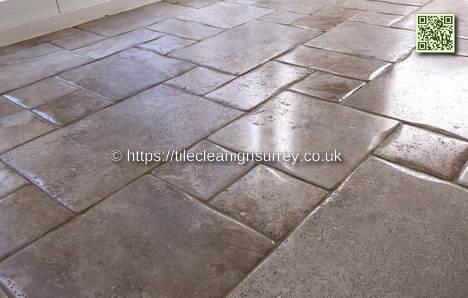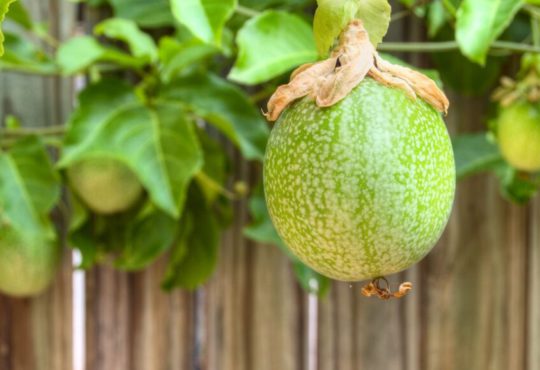
The Essential Guide to Travertine: Benefits, Varieties, and Care Tips
s TravertineTravertine is a highly sought-after natural stone for indoor and outdoor applications. Its unique texture, earthy tones, and cultural significance have made it popular among designers, developers, and homeowners. This guide will explore the benefits of travertine, the different types available, its uses, and essential maintenance tips, helping you make informed decisions for your next building or remodelling project.
The Formation and Characteristics of Travertine
Travertine, a type of limestone, forms in hot mineral springs through the precipitation of calcium carbonate. This process creates the stone’s distinctive porous texture and unique vein patterns. Travertine is commonly found in regions with significant geothermal activity, including the United States, Turkey, and Italy.
The mineral composition of travertine, mainly calcite and aragonite, gives it both durability and a unique appearance. Its porous structure allows for various finishes—polished, honed, or tumbled—making it a versatile option for different architectural styles.
Explore the Different Types of Travertine for Your Projects

Travertine offers a variety of types, each with its own aesthetic and functional advantages, allowing for endless design possibilities that spark creativity.
Classic Travertine: Timeless Elegance
Classic travertine, characterized by its light, neutral tones and subtle vein-cut patterns, adds a timeless elegance to contemporary and traditional designs, infusing spaces with enduring beauty and sophistication.
Noce Travertine: Warm and Inviting
Noce travertine’s rich, earthy brown hues create a warm and welcoming atmosphere in indoor and outdoor spaces, offering comfort and a sense of homeliness in your design choices.
Silver Travertine: Modern Sophistication
Silver travertine blends grey, silver, and white tones and is perfect for modern, minimalist designs seeking a sleek and sophisticated look. Its unique colour variations can produce striking visual effects.
Walnut Travertine: Earthy Elegance
Walnut travertine combines the warmth of Noce with the neutrality of Classic travertine. Its medium brown tones, accented with hints of gold, make it an excellent choice for creating an elegant yet earthy ambience.
Ivory Travertine: Subtle Versatility
Ivory travertine, with its cream-coloured tones, pairs effortlessly with various other colours, making it ideal for creating a clean, bright look in kitchens, bathrooms, and other spaces.
The Many Applications of Travertine in Construction
Travertine’s natural beauty and durability make it an excellent choice for enhancing various areas of your home or commercial space. Let’s explore how this versatile stone can elevate different applications.
Transform Your Floors with Travertine
Travertine flooring is a popular choice thanks to its natural, non-slip surface. This makes it ideal for high-traffic areas like kitchens, bathrooms, and hallways. This stone’s exceptional durability ensures it can withstand everyday use while maintaining its stunning appearance for years.
When selecting travertine flooring, consider the finish that best suits your style and needs. Honed and tumbled travertine offers a rustic, matte look, perfect for a more casual, earthy feel. For a more refined, luxurious touch, polished travertine provides a sleek, reflective surface that adds elegance to any space.
Elevate Your Outdoor Spaces with Travertine Pavers
Travertine pavers are a favourite for outdoor areas such as patios, pool decks, and garden paths. The stone’s natural porosity keeps it cool underfoot, even in direct sunlight, providing comfort for barefoot walking. Moreover, travertine’s resistance to weathering ensures it remains beautiful over time, regardless of the elements.
Tumbled travertine pavers are top-rated for outdoor use. Their texture enhances visual appeal and improves grip, making them safer to walk on, even when wet.
Add a Luxurious Touch with Travertine Countertops
Travertine countertops bring a touch of luxury to kitchens and bathrooms. Their unique patterns and warm tones create a sophisticated, timeless look. With proper sealing, travertine countertops offer durability and resistance to heat, making them both a practical and elegant choice for your space.
Travertine countertops bring a touch of old-world charm to kitchens and bathrooms. Though softer than granite or tile, travertine’s unique veining and warm tones make it a popular choice for those seeking to incorporate natural beauty into their interiors.
Sealing travertine countertops regularly is important to preserve their appearance. This protective layer helps prevent damage and keeps the stone looking its best.
Transform Your Space with Travertine Wall Cladding
Travertine wall cladding adds depth and texture to both interior and exterior walls. Whether it’s a feature wall in a living room or the façade of a building, travertine transforms any surface into a striking visual statement. Vein-cut travertine is incredibly impactful, with its linear patterns creating a dynamic sense of movement.
Unleash Creativity with Travertine Mosaics
Travertine mosaics offer endless opportunities for creative design. These beautiful stone pieces can be arranged in various patterns to create stunning backsplashes, shower surrounds, or decorative accents. The natural variations in colour and texture make each mosaic installation a unique and vibrant work of art.
Best Practices for Maintaining and Caring for Travertine
Maintaining the beauty of travertine requires regular care. Follow these simple practices to keep your travertine surfaces in top condition.
Clean Regularly with pH-neutral Solutions.
Travertine is sensitive to acids, so always use a pH-neutral cleaner for regular cleaning. Avoid vinegar, lemon juice, and other acidic products, as they can damage the surface and dull the shine. Opt for stone-specific cleaners that remove dirt and grime without harming the stone.
Seal to Protect Against Stains
Sealing your travertine is crucial, especially in high-traffic areas or places exposed to moisture. A quality stone sealer creates a protective barrier that prevents stains from penetrating the stone’s porous surface. Depending on usage, reseal your surfaces every 6 to 12 months to maintain their protection.
Act Quickly on Spills and Stains
To minimize staining and etching, clean spills immediately. Blot the spill with an absorbent cloth or paper towel rather than wiping, which can spread the liquid and cause more damage. For stubborn stains, a poultice made of baking soda and water can effectively lift the stain without harming the stone.
Protect High-Traffic Areas with Rugs and Mats
Use rugs or mats in high-traffic areas to prevent scratches and wear on travertine floors. Place mats at entryways to catch dirt and debris before they reach the stone surface, and use felt pads under furniture to avoid scratches.
Avoid Harsh Cleaning Tools
When cleaning travertine, avoid harsh tools like steel wool, green scrubbing pads, or stiff brushes, as they can scratch the stone. Instead, use soft cloths and microfiber mops to clean and maintain your travertine surfaces gently.
Choosing Travertine Responsibly: A Sustainable Approach
While quarrying and processing travertine have environmental impacts, responsible sourcing and mindful use can make it a sustainable choice for building and design.
Ethical Sourcing for a Greener Future
When selecting travertine, prioritize suppliers committed to ethical sourcing. This includes minimizing environmental damage during quarrying and ensuring fair treatment and wages for workers. By choosing ethically sourced travertine, you support sustainable practices within the natural stone industry.
Recycling and Reusing Travertine
Travertine’s durability makes it ideal for recycling and reuse. Old travertine tiles, pavers, and cladding can be repurposed in new projects, reducing the demand for new materials and minimizing waste. Furthermore, travertine’s natural composition makes it fully recyclable at the end of its life cycle.
Lowering the Carbon Footprint of Travertine
Opting for locally sourced travertine reduces its carbon footprint by reducing transportation-related emissions. Additionally, using lighter-coloured travertine can lower energy consumption in buildings by reflecting more sunlight and decreasing the need for artificial cooling.
FAQs about Travertine
Marble v: What’s the Difference?
Travertine is a type of limestone, while marble is limestone that has transformed under high pressure and temperature. It is more porous with a textured surface, whereas marble is denser and offers a smoother, polished finish.
How to Prevent Etching on Travertine
Etching occurs when acidic substances dull the surface of the travertine. Avoid acidic cleaners and immediately clean up spills like wine, citrus juice, or vinegar to prevent this. Regular sealing also provides additional protection against etching.
Is Travertine Suitable for Cold Climates?
Yes, travertine can be used in cold climates if you select a thick, high-quality variety that can endure freeze-thaw cycles. Proper installation, including using sealers and ensuring good drainage, is essential to prevent damage.
Modern Design with Travertine: Is It Possible?
Absolutely. Travertine’s versatility makes it ideal for modern designs. Silver and grey travertine varieties are prevalent in contemporary architecture, providing a sleek and sophisticated look for floors, walls, and countertops.
Why Choose Travertine for Pool Decking?
Travertine is an excellent choice for pool decking due to its natural slip resistance, ability to stay cool underfoot, and durability against weathering. Thus, it is both a practical and attractive option for outdoor spaces.
The post The Ultimate Introduction To Travertine: Benefits, Types, and Maintenance sponsored by Travertine Cleaning Cobham
The Article The Essential Guide to Travertine: Benefits, Varieties, and Care Tips appeared first on https://fabritec.org
The Article The Essential Guide to Travertine: Benefits, Varieties, and Care Tips Was Found On https://limitsofstrategy.com
The Article The Essential Guide to Travertine: Benefits, Varieties, and Care Tips First Appeared ON
: https://ad4sc.com












What a captivating dive into the world of travertine! I must say, I didn’t know I’d be inspired to consider rock formations while enjoying my morning coffee, but here we are. It seems that in the world of stone, travertine is like that charming friend who shows up at a cocktail party, effortlessly drawing everyone’s attention with their unique style and a dash of whimsy.
I’m thrilled to hear that travertine has made its debut in your morning coffee reflections. It truly has that rare blend of elegance and down-to-earth charm that makes everyone stop and appreciate the beauty right in front of them. You know, thinking of travertine as that charismatic friend at a cocktail party really hits the nail on the head. It kind of sidles up to you, and before you know it, you’re completely entranced by its spontaneous stories of geological journeys and the tantalizing spots of color.
Your take on travertine as that charming friend at a cocktail party really resonates. It’s fascinating how something as seemingly simple as a rock can evoke such personality. When you think about it, travertine truly has an intriguing narrative embedded in its layers. Each piece carries a history – formed by the slow dance of mineral-rich water, over time it builds up and creates this beautiful, textured landscape. In that way, it mirrors our own experiences, doesn’t it?
I love how you framed travertine as that charming friend; it truly does have a unique personality that stands out. It’s interesting to think about the stories embedded in each piece, much like how our experiences shape who we are. I often find myself drawn to natural materials that carry that sense of history and connection, whether it’s in architecture or design elements in my own home.
You’ve captured a really profound aspect of travertine. Drawing parallels between the rock’s formation and our own personal narratives is such a thoughtful observation. It’s true that those layers not only reflect natural processes but also symbolize the experiences and stories that shape us over time.
Your observation about travertine’s layers is spot on. It really strikes me how, much like these geological formations, our personal stories aren’t always linear. Life’s ups and downs, and even the quieter moments, can leave lasting marks that define who we are.
You’ve really tapped into something profound with that reflection on travertine. It’s interesting to think about how its formation parallels our own journeys. Just like travertine, we accumulate experiences, layers of memories, and stories that shape who we are. I often find myself marveling at the natural world and how it can serve as a reminder of resilience and time.
You’ve hit on something truly compelling. The way travertine captures layers over time reflects how we build our identities through experiences. Each layer in the rock tells a story, much like the memories we accumulate throughout our lives.
You’ve hit on something truly compelling. The parallels between travertine and our personal narratives are fascinating. Each layer does indeed tell a story, and it’s intriguing to think about how those layers—like our memories—can sometimes be visible, while at other times they’re buried deep within us.
You’ve captured the essence of it beautifully. The way layers of travertine build upon one another resonates with how our memories and experiences shape who we are. It’s interesting to consider how some layers might be more prominent—events that stand out in our minds—while others fade into obscurity, only to resurface unexpectedly.
You’ve made such an insightful observation about the layers of travertine and how they resonate with our personal narratives. It’s fascinating to consider how each layer is a testament to its history, much like the experiences and memories we accumulate over time. I sometimes think about how we curate our layers—what we choose to expose and what we keep hidden.
It’s interesting to consider how maintaining the beauty of travertine parallels nurturing our memories; both require care and attention, much like the insights shared in this helpful guide on cleaning travertine.
‘Expert Tips for Cleaning Travertine from Fabritec Tile Cleaning’
https://cable13.com/expert-tips-for-cleaning-travertine-from-fabritec-tile-cleaning/.
It’s intriguing to hear your thoughts on travertine as a metaphor for our personal evolution. You brought up the idea of accumulation and layers, which really gets to the heart of the matter. We gather experiences like those mineral deposits, and over time, the weight of them influences how we present ourselves to the world. But I wonder if we sometimes romanticize this process a bit too much when discussing resilience and personal growth.
It’s true—travertine does evoke a sense of narrative and history that feels deeply personal, almost like it tells our own stories back to us. I often find myself thinking about the parallels between natural materials and human experiences. Like you mentioned, each layer in travertine is a testament to the slow, deliberate passage of time, shaped by various forces.
You really captured the essence of travertine and its connection to our shared narratives. It’s fascinating how these natural materials not only hold physical history but also resonate with our personal stories. I think about how each layer of travertine reflects the slow accumulation of experiences—much like how we grow and evolve over time through our own layers of experiences.
Your exploration of travertine truly highlights its multifaceted appeal. I’ve always been drawn to its natural beauty and warmth, particularly how it effortlessly bridges both indoor and outdoor spaces. In my recent garden renovation, I chose travertine tiles for the patio, and not only did they complement the landscape beautifully, but their porous texture also made them surprisingly slip-resistant, which was critical for safety.
Your exploration of travertine really highlights its fascinating origin and versatility! I appreciate how you touched on its mineral composition, as I once read about how the unique veins in travertine can tell the story of the region they came from. It’s incredible to think that a stone formed from mineral springs can carry such history and personality into our homes and outdoor spaces.
You make a great point about how those unique veins can narrate a region’s history. It’s almost like each piece of travertine is a tiny window into the past, showing us the environmental conditions and processes that shaped it. I find it fascinating how the colors and patterns vary so much, depending on where it originated.
It’s fascinating to learn about the intricate process behind travertine formation and its versatility in design. The fact that it emerges from hot mineral springs highlights not just its geological significance but also its cultural relevance, particularly in regions like Italy, where it has been used since ancient Roman times.
I find the discussion about travertine’s unique characteristics and uses particularly fascinating. The way it forms in hot mineral springs truly highlights nature’s artistry—it’s impressive to think about how the geothermal activity shapes not only the stone’s appearance but also its value in various applications.